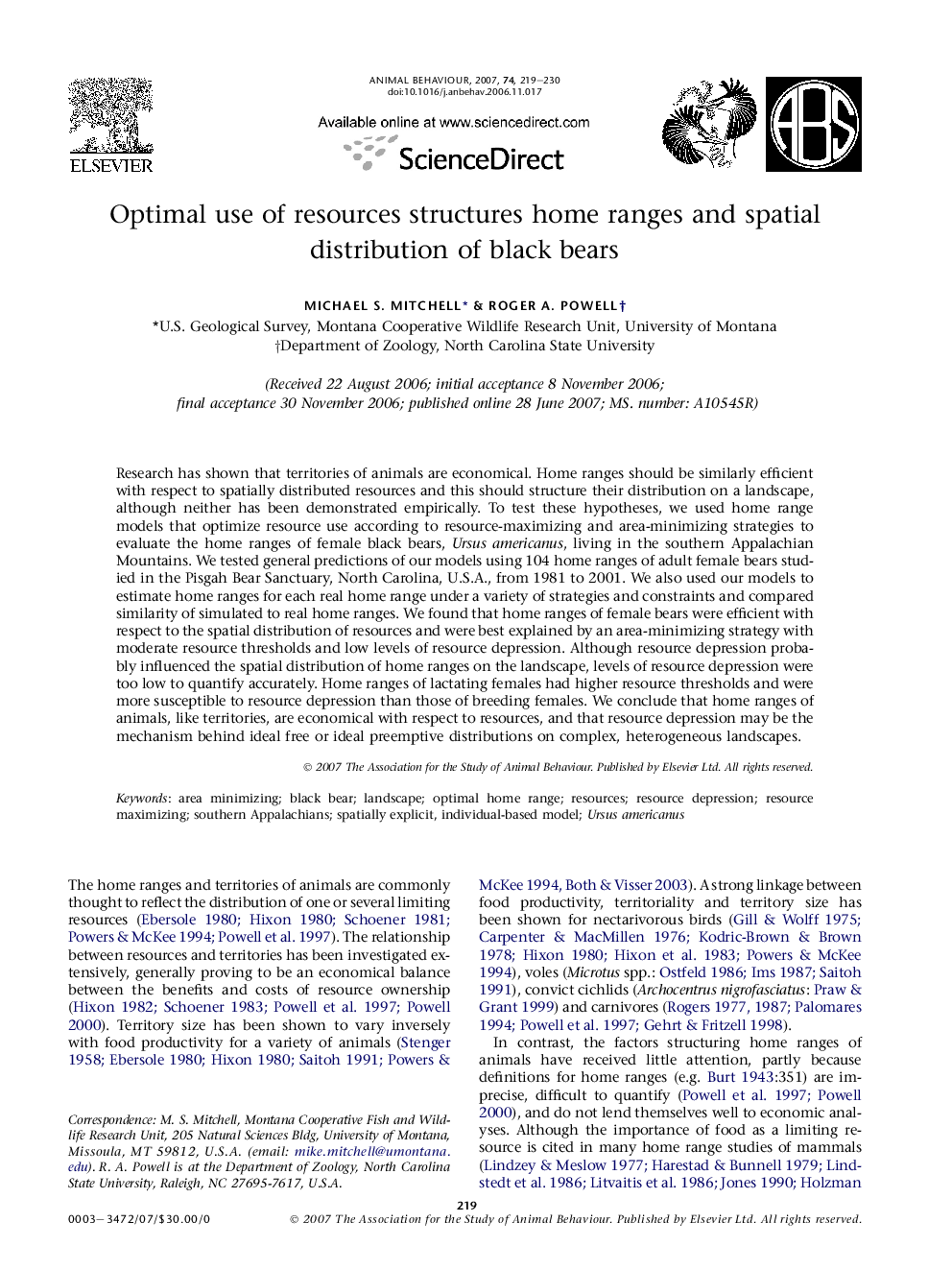| Article ID | Journal | Published Year | Pages | File Type |
|---|---|---|---|---|
| 2417939 | Animal Behaviour | 2007 | 12 Pages |
Research has shown that territories of animals are economical. Home ranges should be similarly efficient with respect to spatially distributed resources and this should structure their distribution on a landscape, although neither has been demonstrated empirically. To test these hypotheses, we used home range models that optimize resource use according to resource-maximizing and area-minimizing strategies to evaluate the home ranges of female black bears, Ursus americanus, living in the southern Appalachian Mountains. We tested general predictions of our models using 104 home ranges of adult female bears studied in the Pisgah Bear Sanctuary, North Carolina, U.S.A., from 1981 to 2001. We also used our models to estimate home ranges for each real home range under a variety of strategies and constraints and compared similarity of simulated to real home ranges. We found that home ranges of female bears were efficient with respect to the spatial distribution of resources and were best explained by an area-minimizing strategy with moderate resource thresholds and low levels of resource depression. Although resource depression probably influenced the spatial distribution of home ranges on the landscape, levels of resource depression were too low to quantify accurately. Home ranges of lactating females had higher resource thresholds and were more susceptible to resource depression than those of breeding females. We conclude that home ranges of animals, like territories, are economical with respect to resources, and that resource depression may be the mechanism behind ideal free or ideal preemptive distributions on complex, heterogeneous landscapes.
